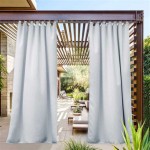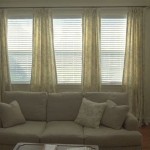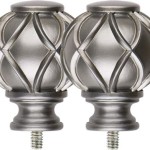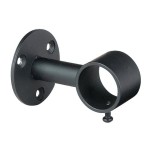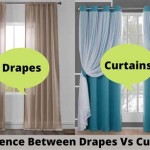Best Curtains For Keeping Cold Out
Maintaining a comfortable indoor temperature during colder months often relies on effective insulation. While walls, windows, and doors contribute significantly, curtains can play a crucial role in preventing heat loss and minimizing drafts. Selecting the right type of curtain is paramount for optimizing their insulating capabilities.
Curtains act as a thermal barrier, reducing the transfer of heat from the interior of a building to the cold exterior. This is especially important for windows, which typically have lower insulation values than walls. The type of fabric, the construction of the curtain, and its installation all determine its effectiveness in combating cold temperatures.
Fabric Types for Optimal Insulation
The material from which curtains are made directly impacts their ability to insulate. Certain fabrics possess inherently better thermal properties, making them more effective at trapping heat and blocking drafts. The density and weave of the material are also key considerations.
Wool: Wool is a naturally good insulator. Its fibers trap air, creating a barrier that hinders heat transfer. Wool curtains are typically heavier and more expensive than curtains made from other materials, but their insulation performance is generally superior. The natural crimp of the wool fibers creates pockets that hold air, providing inherent thermal resistance. Furthermore, wool is naturally fire-resistant, adding a safety element to its functional benefits.
Fleece: Fleece, often made from polyester, is a synthetic fabric that is known for its soft and fluffy texture. This texture allows it to trap air effectively, making it a good insulator. Fleece curtains are typically less expensive than wool curtains, offering a more budget-friendly option for improving insulation. The lightweight nature of fleece also makes it easy to work with and can reduce stress on curtain rods.
Velvet: Velvet is a dense, pile fabric that provides excellent insulation due to its thickness and weight. The tightly woven fibers create a barrier against drafts and minimize heat loss. Velvet curtains often have a luxurious appearance, making them a suitable choice for both functional and aesthetic purposes. When selecting velvet curtains, consider the pile height, as a higher pile generally indicates a denser fabric with better insulation properties.
Thermal Fabrics: Thermal fabrics are specifically engineered to provide maximum insulation. These fabrics often consist of multiple layers, including a layer of acrylic foam or a metallic backing, to reflect heat back into the room. Thermal curtains are designed to block light and reduce noise, in addition to providing thermal insulation. The specialized construction of thermal fabrics makes them particularly effective in reducing energy consumption and improving overall comfort.
Lined Curtains: Regardless of the primary fabric, adding a lining significantly improves the insulating properties of curtains. Linings act as an additional layer of protection against drafts and heat loss. Blackout linings not only block light but also provide enhanced thermal insulation. The lining material can be a simple cotton or polyester blend, or a more specialized thermal lining fabric.
Curtain Construction and Design
Beyond the fabric itself, the construction and design of the curtains play a critical role in their effectiveness in keeping out the cold. Factors such as pleating, length, and layering all contribute to the overall insulation provided.
Pleated Curtains: Pleated curtains, such as pinch pleat or goblet pleat, offer a more structured and formal appearance compared to flat panel curtains. The pleats create folds in the fabric, adding extra volume and increasing the insulating properties of the curtain. The increased fabric density in the pleats helps to trap air and minimize heat loss. Different pleat styles offer varying degrees of fullness and insulation, so selecting the appropriate pleat style can optimize thermal performance.
Full Length: Curtains should ideally extend to the floor to effectively block drafts originating from the bottom of the window. A slight pooling of the fabric on the floor can further enhance their insulation by creating a seal against drafts. However, it is important to ensure that the curtains are not excessively long, as this can create a tripping hazard. Measuring the window accurately and selecting the appropriate curtain length is crucial for maximizing insulation and safety.
Width: Curtains should be wide enough to fully cover the window and extend beyond the window frame to prevent light and drafts from seeping through the sides. The general rule of thumb is that curtains should be two to three times the width of the window. This extra width allows the curtains to be drawn comfortably without stretching the fabric, maximizing coverage and insulation. Insufficient width can compromise the curtain's ability to block drafts and reduce heat loss.
Layering: Layering curtains can significantly improve their insulating properties. Combining sheer curtains with heavier, more insulating curtains allows for flexibility in light control and temperature regulation. During the day, sheer curtains can provide privacy without blocking all natural light, while during the night, the heavier curtains can be drawn to provide maximum insulation. This layering approach allows for adaptability to changing weather conditions and personal preferences.
Valances and Cornices: Adding a valance or cornice above the curtains helps to seal off the top of the window, preventing drafts from entering the room from above. These decorative elements also add a touch of style to the window treatment. Valances and cornices can be constructed from various materials, such as wood, fabric, or metal, and should be chosen to complement the existing décor. Proper installation of valances and cornices is essential to ensure a tight seal and prevent drafts.
Installation Techniques for Maximizing Insulation
Even the most insulating curtains will be ineffective if they are not installed properly. Paying attention to installation details is crucial for maximizing their ability to keep out the cold. Considerations include the type of rod, the proximity of the curtain to the window, and methods for sealing gaps.
Rod Placement: Installing the curtain rod as close to the ceiling as possible can help to block drafts that may be coming from the top of the window frame. This also creates the illusion of a taller window, adding visual appeal to the room. The rod should also extend beyond the window frame on either side to allow the curtains to fully cover the window and prevent light and drafts from seeping through the sides. Selecting a sturdy and durable curtain rod is important to support the weight of the curtains, especially if they are made from heavy materials like wool or velvet.
Close to the Window: Hanging curtains as close to the window as possible minimizes the air gap between the curtain and the window, reducing convective heat loss. Using a track system or a rod that allows the curtains to be mounted flush against the wall can help to achieve this. The smaller the air gap, the less opportunity for cold air to circulate and reduce the effectiveness of the insulation.
Sealing Gaps: Gaps around the edges of the curtains can negate much of their insulating benefits. Sealing these gaps with weather stripping or magnetic tape can help to create a tighter seal and prevent drafts from entering the room. Weather stripping can be applied to the window frame to create a barrier against drafts, while magnetic tape can be attached to the edges of the curtains to seal them against the wall or window frame. Addressing these gaps is essential for maximizing the overall insulation performance of the curtains.
Curtain Rings and Hooks: The type of curtain rings or hooks used can also affect the insulation. Rings that create a tight seal against the curtain rod can help to prevent drafts from entering from above. Using rings with clips or hooks that securely attach the curtain to the rod is important to prevent the curtains from slipping or falling down. Selecting high-quality rings and hooks ensures that the curtains are properly supported and that the insulation is maximized.
Regular Maintenance: Regularly cleaning and maintaining curtains can help to preserve their insulating properties. Dust and dirt can accumulate on the fabric, reducing its ability to trap air and provide insulation. Vacuuming or washing curtains regularly can remove this debris and restore their thermal performance. Following the manufacturer's instructions for cleaning and care is essential to prevent damage to the fabric. Taking care of curtains ensures that they continue to provide effective insulation for years to come.
By selecting appropriate fabrics, considering construction details, and paying attention to proper installation, curtains can be a significant element in maintaining a warm and comfortable home during cold weather. The upfront investment in higher-quality, well-installed curtains can lead to long-term savings on energy bills and an improved living environment.

The Best Curtains To Keep Heat Out Year Round Shade

The 7 Best Thermal Curtains In 2024 Curtain Reviews

The Best Curtains To Keep Heat Out Year Round Shade

Best Curtains To Keep Cold Out And Save Energy This Winter

The 7 Best Thermal Curtains In 2024 Curtain Reviews

Best Curtains To Keep Your Home Warm In The Winter Fabric Carolina

Cozy Up Best Curtains To Keep The Cold Out This Winter

The 4 Best Blackout Curtains Of 2025 Reviews By Wirecutter

Cozy Up Best Curtains To Keep The Cold Out This Winter

6 Best Window Coverings To Keep Cold Out


